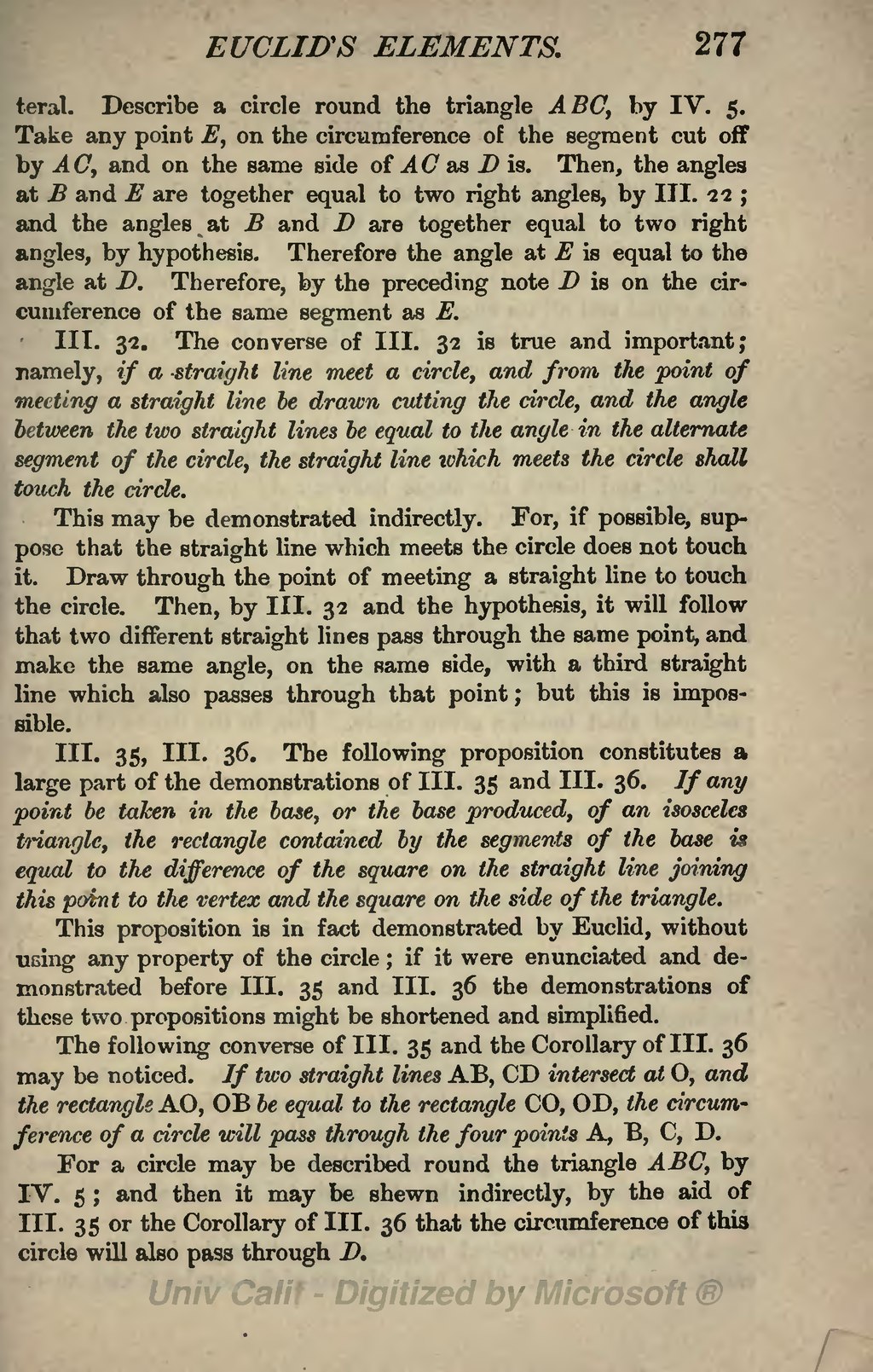teral. Describe a circle round the triangle ABC, by IV. 5. Take any point E, on the circumference of the segment cut off by AC, and on the same side of AC as D is. Then, the angles at B and F are together equal to two right angles, by III. 72; and the angles at B and D are together equal to two right angles, by hypothesis. Therefore the angle at E is equal to the angle at D. Therefore, by the preceding note D is on the circumference of the same segment as E.
III. 32. The converse of III. 32 is true and important; namely, if a straight line meet a circle, and from the point of meeting a straight line be drawn cutting the circle, and the angle between the two straight lines be equal to the angle in the alternate segment of the circle, the straight line which meets the circle shall touch the circle.
This may be demonstrated indirectly. For, if possible, suppose that the straight line which meets the circle does not touch it. Draw through the point of meeting a straight line to touch the circle. Then, by III. 32 and the hypothesis, it will followthat two different straight lines pass through the same point, and make the same angle, on the same side, with a third straight line which also passes through that point; but this is impossible.
III. 35, III. 36. The following proposition constitutes a large part of the demonstrations of III. 35 and III. 36. If any point be taken in the base, or the base produced, of an isosceles triangle, the rectangle contained by the segments of the base is equal to the difference of the square on the straight line joining this point to the vertex and the square on the side of the triangle.
This proposition is in fact demonstrated by Euclid, without using any property of the circle; if it were enunciated and demonstrated before III. 35 and III. 36 the demonstrations of these two propositions might be shortened and simplified.
The following converse of III. 35 and the Corollaray of III. 36 may be noticed. If two straight lines AB, CD intersect at 0, and the rectangle AO, OB be equal to the rectangle CO, OD, the circumference of a circle will pass through the four points A, B, C, D.
For a circle may be described round the triangle ABC, by IV. 5; and then it may be shewn indirectly, by the aid of III. 35 or the Corollary of III. 36 that the circumference of this circle will also pass through D.
